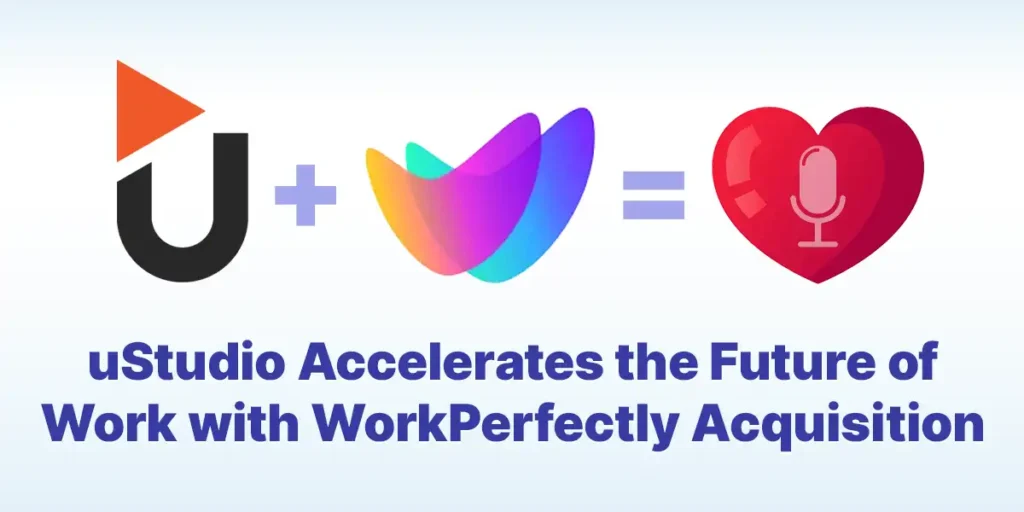Cut Through the Noise: Smarter UX Transforms Training and Comms
Michael Wright - VP of Sales at uStudio | Uncategorized


In today’s digital workplace, employee attention is under siege. Knowledge workers toggle between apps, notifications, and dashboards in a constant state of multitasking. The average employee switches between tasks every 40 seconds (Gloria Mark, UC Irvine), and digital overload is costing organizations millions in lost productivity.
As distractions multiply, it’s not your content’s value that’s lacking—it’s the ease with which it’s accessed and absorbed. That’s why delivering enterprise media via a familiar, consumer-grade user experience—like those found in Spotify, Apple Podcasts, or Netflix—is no longer a “nice-to-have,” but a strategic imperative.
1. The Brain Craves Familiarity: UX and Cognitive Load
Cognitive Load Theory tells us that people have limited mental bandwidth for processing new information. When faced with a confusing interface, the brain redirects energy from absorbing the content to figuring out how to access it. This leads to frustration, abandonment, and disengagement.
Nielsen Norman Group data:
- Familiar interface patterns can increase task success by 58%
- They reduce time-on-task by 37%
Enterprise platforms that echo recognizable design patterns—clear buttons, logical navigation, minimalist visual hierarchy—don’t just look better. They demand less cognitive effort, making it easier for users to stay focused on the message, not the medium.
2. Learning in Context: Mobile and Micro-Engagement
The rise of mobile-first work isn’t a trend—it’s a behavioral shift. Knowledge workers are constantly on the move, multitasking between meetings, home offices, and hybrid setups. Accessing corporate content must be as frictionless as checking a podcast or streaming a video.
What the research shows:
- 91% of knowledge workers use their smartphones for work tasks during the week (Gartner)
- Workplace tools that resemble personal-use platforms increase engagement by 74% (Forrester)
- Audio-based learning can double retention rates compared to text-based content (Journal of Applied Psychology)
When corporate content is embedded into tools that feel intuitive and mobile-ready, it enters the “flow of life.” That’s where real adoption happens—not in clunky LMS portals or buried intranet folders.
3. The Consumerization of Work Tech Is Here to Stay
Once reserved for personal use, intuitive app design is now an enterprise expectation. This phenomenon—known as the consumerization of IT—has transformed how employees judge workplace tools. If an interface feels outdated, clunky, or slow, users disengage. They expect fast load times, personalized content, and seamless navigation.
Implication: The bar for usability isn’t other enterprise apps—it’s the best apps they use off the clock.
This doesn’t mean companies should mimic Netflix or Spotify wholesale. But it does mean recognizing that expectation-setting has shifted, and a more elegant, responsive experience is no longer optional—it’s strategic.
4. Security Doesn’t Need to Compromise Simplicity
There’s a lingering belief in enterprise software circles that security and usability exist in tension. That a tool must be hard to use to be compliant. But modern platforms show that this tradeoff is false.
Progressive disclosure design principles and SSO integrations allow secure systems to remain intuitive. Users don’t need to know about compliance logs or backend encryption protocols. What they feel is ease of use—and it’s that perception that builds trust and encourages repeat engagement.
5. When Design Meets Behavior, Performance Follows
This isn’t just theory—it’s been measured. Organizations that align user experience with behavioral science report significant gains across key metrics:
Performance benchmarks:
- Mobile app usage can increase by 3X to 5X post-redesign
- Engagement with learning and enablement content jumps by 30%+
- Support requests for basic navigation or access issues decline significantly
The reason? When content is easy to find, easy to use, and pleasant to consume, people come back. That’s true whether it’s a training module, a leadership update, or a cultural podcast series.
Conclusion: Design Like It Matters—Because It Does
Better UX isn’t just prettier UI. It’s rooted in cognitive science, behavioral economics, and real-world outcomes. When enterprise content delivery platforms align with how people think, work, and learn, the impact is exponential—greater engagement, higher retention, and more measurable business value.
That’s why we built the uStudio platform the way we did: with cognitive ease, mobile behavior, and enterprise rigor at the core. If you want to see what it looks like in action, schedule a live demo and explore how modern UX principles can drive your communication strategy forward.

Michael Wright is a seasoned sales and customer success leader with over 15 years of experience in sales, account management, and client success. He has held progressive leadership roles at companies such as SpareFoot (2011–2017) and Rollick (2017–2022), where he served as VP and Director of Sales and Account Management. Currently, he is the VP of Sales and Customer Success at uStudio and an Executive Member at Pavilion.
Michael began his career as a Surgical Attendant at St. Mary’s Hospital and later transitioned into sales and account management roles at IT Convergence, Precision Tune Auto Care, and others. He holds a B.A. from the University of Virginia and completed a Post Baccalaureate Pre-Medical Program at UC Berkeley Extension.


